Rhinoceros are one of the five giants of Africa and absolutely love to be in the water. Judging by the hot desert weather they live in, there is no doubt why such a giant is so fond of water. It helps them to cool down their skin and also protects them from bugs.
Rhinoceroses need to live near small lakes for a continuous supply of water. But to be in water one must know how to swim. Whereas, the rhinos are huge creatures with an immense weight to carry. So can rhinos swim at all?
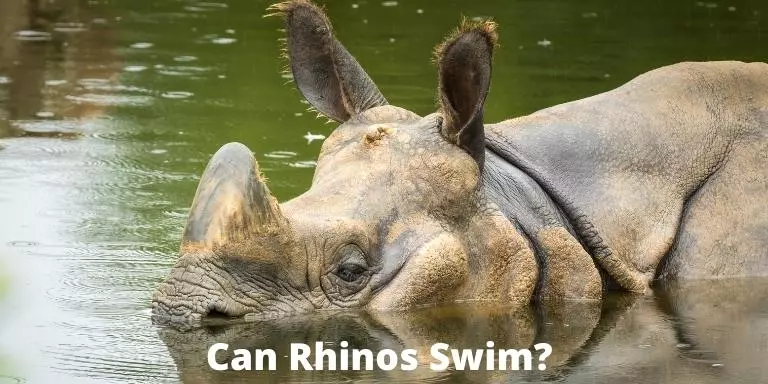
Can Rhinos Swim?
The Rhinoceroses are excellent swimmers. But not all species of them can make it through lochs. When it comes to snorkeling, only the Asian ones can make it to the other side. African species can not dive and can drown in deep rivers. That’s why they avoid crossing rivers, lakes, and deep wallows.
Still, none of them can live without water. African rhinos are found in shallow swamps, mud-holes, wallows, etc. Even they often end up fighting with the other aquatic mammal hippopotamus regarding the claim of small wallows.
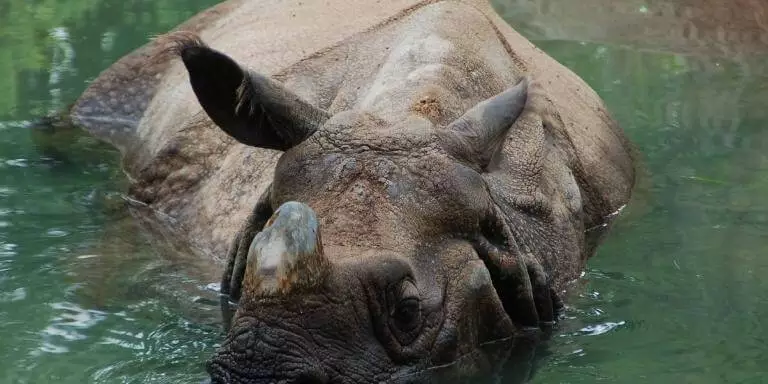
They also need to consume water daily. But they can also survive several days without water during drought or aqueous scarcity.
Rhino Species That Can Swim
All three Asian species: Javan, Sumatran, and Indian rhinos are equal divers. But among them, the Indian rhino (also known as the greater one-horned) spends the most time submerged.
Javan and Sumatran rhinos also are fond of water and have no problem moving through it. But these two need dry land also. Because they find most of their food on land. But all of them enjoy their dips in the wild. Almost all of the Asian rhinos are seen to cross deep rivers and lakes.
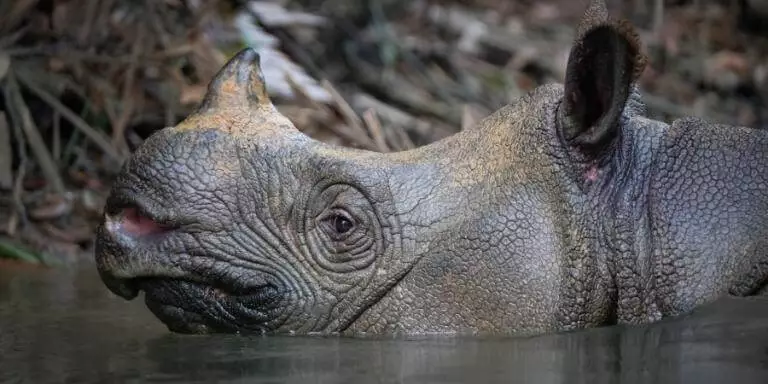
The greater one-horned rhinoceroes are more aquatic because they eat hydrophytic plants. So they can both rest and eat while they are submerged. They even dive underwater to feed on plants and other aquatic creatures.
The White and black rhinoceroses are not as good aquanauts as them. They are a lot heavier than their Asian cousins. As a result, they are not able to cross deep lakes and water holes.
Rather they spend most of their time in the mud holes. The mud bath is very healthy for the animal. The layer of mud on their skin protects them from sunburn. It helps them to stay cool in the hot African weather. The thin mud layer also prevents bug bites and parasites of skin.
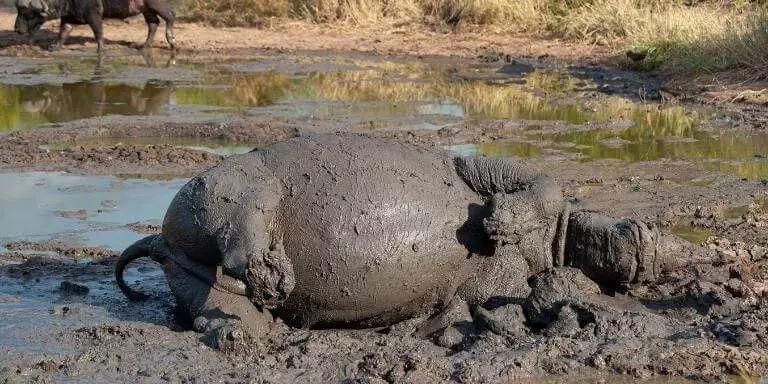
But due to their greater height than the asian rhino species, they often can cross the rivers on foot. As a result, floating is not required for them at all.
Rhino Speed in Water
No report of speed has been found or seen as the rhinos are not that fast swimmers. Because it is not their primary objective. They rather like to spend more hours in the swamps.
How Rhinos Swim
The Rhino doesn’t take a dip like others. The African rhinos tend to walk through the flood if they can. But the asian rhinos can do the task better than them. Though they are seen to dive underwater, they are not semi-aquatic mammals such as hippos. Indian rhinos often fully submerge themselves if the heat is unbearable.
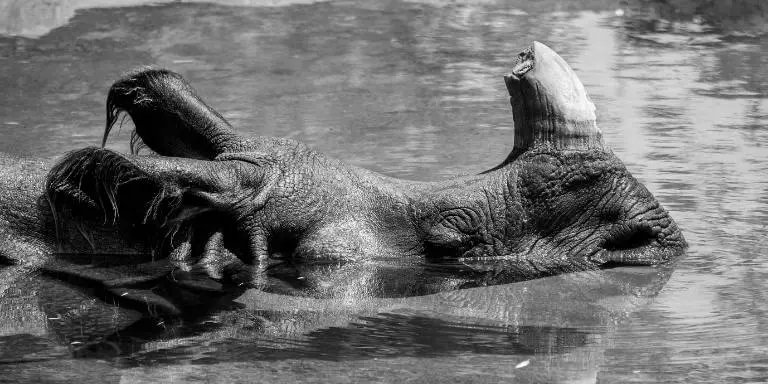
Aquatic Predators
Adult Rhinos don’t need to fear any aquatic predators. The crocodiles usually don’t prefer attacking the giants. But the calves are always in danger while crossing a river or a lake. Because many calves are attacked then.
But many land predators such as lions, hyenas, and tigers often attack the rhino. So it is more dangerous for them to stay on land than in swamps.
Conclusion
Rhinoceros can swim. But not all of them. Only the Asian ones, specifically the Indian species, can float easily. But the White and Black herbivores can not. They spend days wallowing in the mud holes. Lastly, they are not speedy divers and generally are not attacked by crocodiles.
You might also be interested in:
- How Long Do Rhinos Live? Rhino Life Cycle Explained
- How Much Does a Rhino Weigh? Animalia Facts
- How Fast Can a Rhino Run? All 5 Species Speed Comparison
- Why Do Rhinos Charge? A Tourist Survival Guide
- How to Stop Rhino Poaching | Anti-Poaching Guide
- Can Rhinos Jump or Walk Backwards?
- Do Rhinos Lay Eggs? Rhino Reproduction Explained
- Where Do Rhinos Sleep? | All Species Comparison
